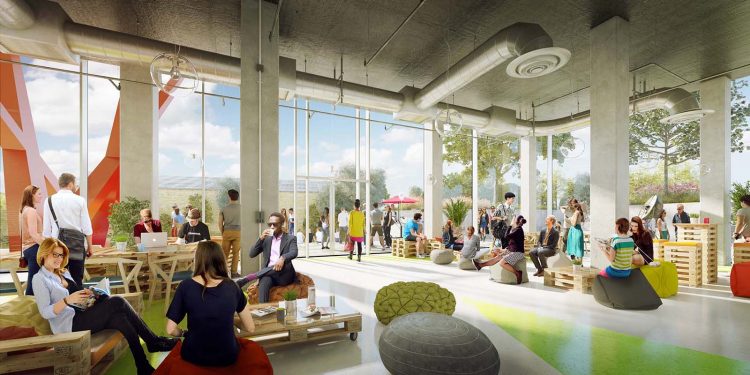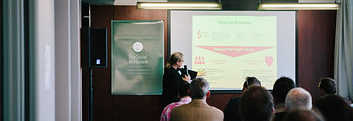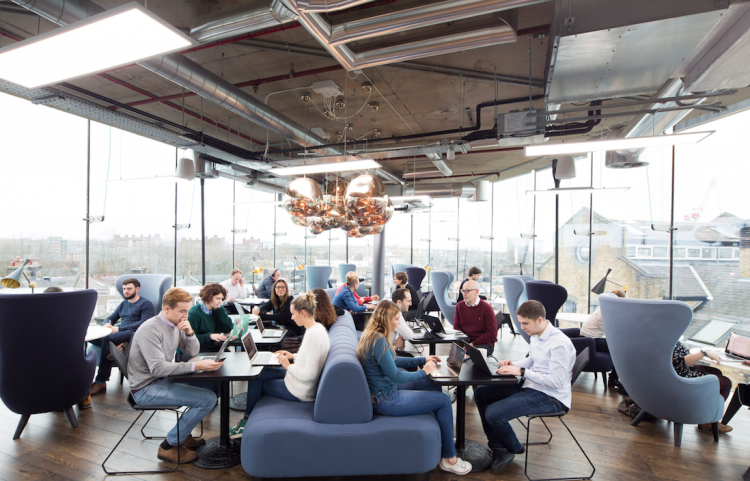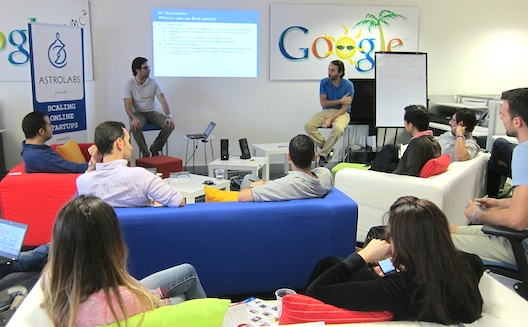In 2010, Reza Merchant was in his last year of university, having a hard time finding an affordable place to live that wasn’t in shambles. Over the years, Merchant and his team started to see more and more issues within the housing market and a lack of supply for a growing demand.
We caught up with Stephanie from the Old Oak Collective, the latest member to join London’s coliving movement, to learn more about what direction coliving is moving and what this concept will bring to professionals living in urban areas.
Hi Stephanie, Can you please tell us about the Old Oak development process and what we can expect from this coliving concept?
We started to purchase derelict buildings and refurbishing them, which is when The Collective brand was created. We identified a gap in the market for high-quality housing for young professionals, who crave a hassle-free way of living, hence our all-inclusive service offering. For example, a single monthly bill covers rent, council tax, all utility bills, room clean, linen change, 24/7 security, and wi-fi. This convenience element is designed to give time-poor professionals more free time to pursue their passions/hobbies or simply to enjoy some more free time.
During this time we gathered feedback from members and conducted surveys which reinforced what we believed; namely that increasingly our generation are more willing to invest in experiences over material possessions, and to share these experiences with a close community of like-minded individuals.
How did the design play a role in the process?
Refurbishing existing buildings had prevented us from providing the communal space needed to facilitate these shared experiences and interactions, which became a priority when looking for space to build our first purpose built co-living building.
When we bought the site in Old Oak we were excited by the opportunity to deliver a wealth of communal space and amenities, as it is 12,000 sq ft in total!
Can coliving provide a real solution to rising real estate prices in London?
It’s an answer to both the increasing rental prices, which are alienating the workers who are the lifeblood of London’s economy. Coliving is also a solution that could cater to the changing lifestyle trends of our generation, who’s ambitions and expectations are very different to that of previous generations, and to whom the current rental market simply doesn’t cater to.
How does the Collective Old Oak specifically help to meet contemporary needs?
At The Collective Old Oak we are offering all-inclusive bill and access to various amenities, including a gym, spa, and rooftop terrace. And of course, you are also gaining access to a ready- made community of people in similar stages of their life journey to you, and that’s something you can’t put a price on.You are not just renting a bed or a room; you’re buying into a lifestyle.
What has been the initial response to coliving in your experience?
It’s been so exciting to see them bring the space to life and take ownership of creating the sense of community, alongside our Community Managers.

Community library at Old Oak
Where there has been the occasional negative comment, it’s inevitably come from people who haven’t visited Old Oak and who don’t understand the concept of co-living.
From your experience, what are people looking for when they decide to colive?
From what we’ve seen over the past couple of months is that people move in for various different reasons, whether it’s a bad experience renting in a shared apartment, or for the ease of the viewing and booking process for someone coming from abroad. Yet, once people have moved in, the reason they fall in love and ultimately stay, is because of the community.
Do you also offer workspaces such as a coworking area, etc.?
Yes. On the ground floor we have a large hot-desking area, designed to feel like a lounge area, where people can take their laptops, sit in one of the armchairs and work remotely. During the day it will also serve as a coffee shop type environment, transforming into a bar in the evening for more informal meetings or social gatherings.
There is also a separate coworking space on the first floor, which is targeted at local creative and ambitious businesses and entrepreneurs. Again, the same emphasis is placed on community, convenience, and quality, making the space an attractive place to work from a cost perspective, as well as lifestyle.
Have you found that people who chose to stay at Old Oak achieve a sense of work-life balance?
It’s about giving people the choice to work from home if they want to, as the younger generation are moving away from the tradition 9-5 jobs and are able to work from anywhere with a fast internet connection. While a lot of our members will want to go into their offices to get a degree of physical separation between their personal and professional lives, many will enjoy the flexibility of being able to work from home. It is also important to create a variety of inspiring spaces that make room for creativity and productivity, so that when they do choose to work from home, they have enough options so that it doesn’t feel like they are just working from bed.
As we are exploring models of work in the new economy, we would like to hear the opinion/experiences of people who are actively engaging in these models. Would you say that coliving is an obvious transition from more traditional coworking?
I think there are definitely many parallels that can be drawn between the two – as I mentioned earlier the same emphasis on community, convenience and quality is placed on both, to cater to co-livers and coworkers demands. Both have the same start-up, social mentality at their core.
In terms of coliving and coworking do you think the marriage of these two concepts could risk blurring the lines between work/life balance?
I think that more and more, our generation are pursuing their passions, following their dreams. So actually working long hours and always being “on” isn’t necessarily a chore, but a source of enjoyment and personal satisfaction. Of course, it can be a risk though and it’s incredibly important to strike a healthy balance, which is why our programme of events encourages people to get away from their desks and join a yoga lesson, inspiring talk, film night, book club or the regular free rooftop BBQ and drinks.
How could a coliving space help enable people to really embrace the sharing/new economy, through events, workshops, etc.
We actually have a very active Facebook page for our Old Oak community, which members use for everything from reporting a maintenance issue to sharing events with each other. A common theme that we’ve seen emerging is people using it to share the cost of, for example, buying their groceries. We have one member, Tracy, who regularly cooks amazing meals in large batches, which she then offers to others as dinner portions, at a very low price. It’s a win win for everyone!




















Recent Comments